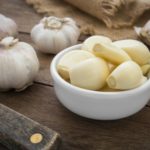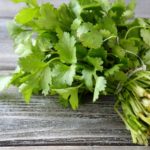Medicinal plants

Medicinal plants – a large group of plants used in medicine for the treatment and prevention of various diseases. Medicinal plants are used both in the form of tinctures and decoctions, and for the preparation of medicines.
Even in ancient times, plants were the main medicinal raw material for the creation of traditional medicine, which served as the foundation for the origin and development of herbal medicine – an extensive branch of the science of plant treatment.
The healing properties of plants are determined by the content of various chemicals in them, which differ in biological activity, which is manifested in the pharmacological effect on the human body. Herbal medicines can have tonic, soothing, analgesic, expectorant, vomiting, diuretic, choleretic, laxative, fixing, anti-inflammatory, hemostatic, antimicrobial, anthelmintic and other properties.
Herbal remedies of a phytogenesis are characterized by specific selective action on any system or organ. Adonis, hawthorn, Richter’s hodgepodge, horsetail, ephedra, melilot, knotweed have an effect on the cardiovascular system; choleretic – elecampane tall, dandelion, tansy, chicory, rose hip, immortelle, etc.
At the end of the XIX and the beginning of the XX century. In connection with the rapid development of chemistry, a large number of drugs synthesized chemically were created and successfully used. During this period, the demand for herbal remedies decreased significantly. However, the separation of so-called “active principles” from plant materials and the creation of pure medicines based on them has remained and remains a priority. In recent years, interest in medicinal herbs has again increased significantly, the need for their raw materials has increased several times. This is due, on the one hand, to the establishment of frequent cases of functional disorders of the human body as a result of prolonged administration of synthetic drugs and, on the other hand, to plant research data that have revealed the content and composition of many chemicals and their highly effective healing properties. An important role in this was played by positive changes towards the official recognition of herbal medicine, traditional medicine with experience accumulated over several millennia.
Currently, no more than 160 types of medicinal herbs and plants are used, the effectiveness of which has already been scientifically proven. However, traditional healers use a much larger number of herbs and according to reviews, many of them give a positive effect in the treatment of diseases that are not always cured by drug therapy. And no wonder, because the vast experience and knowledge about the healing properties of plants has been accumulated by mankind for many centuries. In ancient tribes and peoples, herbal medicine was the basis of healing. The largest ancient Greek thinker and physician Hippocrates – 460-377 BC wrote: “The doctor has three tools – a word, plants and a knife.”
Based on the available materials of ethnographic and archaeological research, some similarity to the pharmacopoeia was compiled by the Egyptians as early as 400 years BC. According to descriptions and images, individual medicinal plants are easily recognizable, many of the species used by the Egyptians are still used now – for example, castor oil.
There is information about the first Chinese book on herbs, “Ben Cao,” dated 2600 BC. Apparently, one of the foundations of this book was the results of the activities of Shen Nun, who lived in the 3rd millennium BC. He used 230 species of medicinal and poisonous plants.
In the myths of the ancient Greeks, there are also references to medicinal herbs, the knowledge of which they associated with the Caucasus. He arrived in Greece in the VII-VI century. BC e. the flourishing of culture contributed to the systematization of knowledge of the ancient world about animals and plants. In the study of medicinal plants and the development of methods and methods for their use, the Greeks effectively used the heritage of the Egyptians and other peoples.
A significant contribution to the science of medicinal plants – pharmacognosy and their treatment – herbal medicine was made by Arab medicine. More than 1400 medicinal plants have been described, complex recipes for medicinal preparations have been created, which included many types of herbs in various proportions. Subsequently, a special profession was a pharmacist. The European pharmacy was created according to the Arabic model.



























